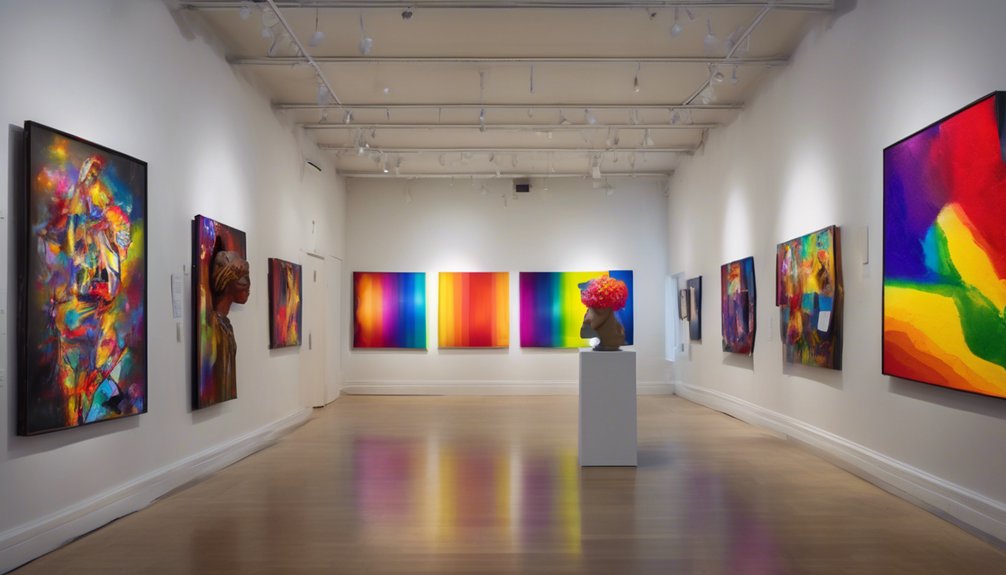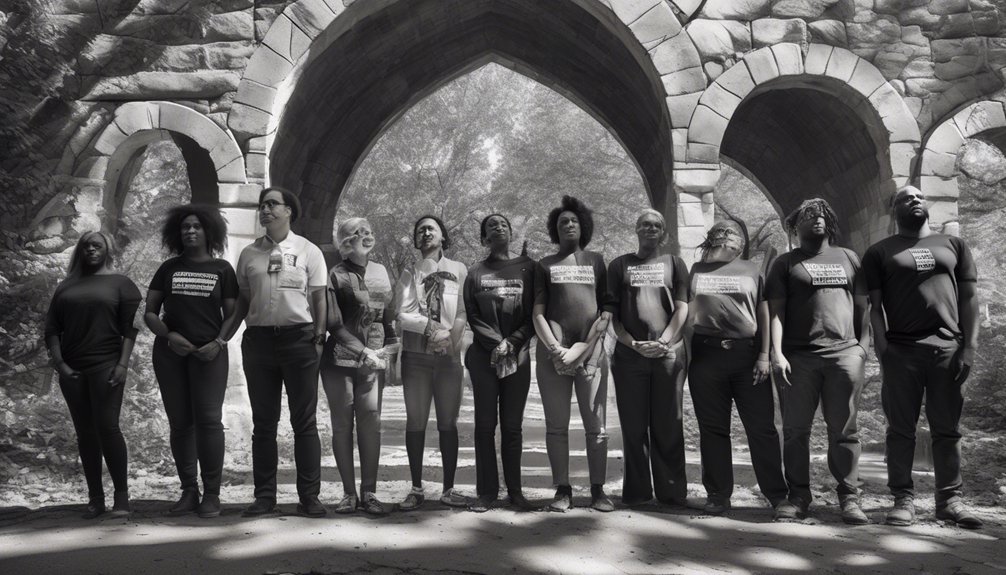Beyond Stonewall: Unearthing LGBTQ+ Voices in History


Table of Contents
ToggleYou might think the Stonewall Uprising is the starting point for LGBTQ+ history, but there’s so much more to reveal beyond that pivotal moment. Ever wonder about the pioneers who broke into politics or the artists who shaped culture? What about the activists who fought tirelessly for rights? By exploring these diverse stories, you’ll uncover a rich tapestry of experiences and contributions. Ready to find out more?
Although the path to LGBTQ+ political representation has been long and challenging, trailblazers like Elaine Noble have paved the way for future generations. In 1974, Noble became the initial openly gay state representative in the U.S., serving Massachusetts with pride and courage. Her election marked a significant milestone, inspiring others to follow her lead. You might also remember Harvey Milk, who in 1977, became one of California’s initial openly gay officials. His influence was profound, encouraging more LGBTQ individuals to pursue political roles. The Gay Liberation Front’s formation in 1969 sparked activism, leading to greater visibility. By the 2000s, LGBTQ political representation surged, with many openly gay politicians elected, showing growing acceptance and changing attitudes towards LGBTQ communities.

Building from the trailblazing efforts of LGBTQ+ political pioneers, the cultural contributions of LGBTQ+ artists have likewise shaped societal perceptions and enriched our shared heritage. You can investigate these contributions through works like Samuel Delany’s “Dhalgren,” which challenges norms by depicting queer urban experiences. Gus Van Sant’s film “My Own Private Idaho” provides a modern twist on Shakespeare, portraying the resilience of LGBTQ+ street hustlers. In the 1940s, Charles Gautreau’s transformation into Thelma showcased queer identity through performance art. These artistic expressions are preserved in the Smithsonian archives, highlighting their impact on culture. By engaging with these stories, you’ll find a rich tapestry of diverse narratives that continue to influence and inspire across generations.

When you think of key moments in LGBTQ+ activism, the Stonewall Uprising of 1969 often comes to mind as a pivotal event that lit the spark for the modern LGBTQ+ rights movement. Following Stonewall, activism surged with the initial Pride marches in 1970, raising visibility and advocacy for LGBTQ+ rights. Groups like the Gay Liberation Front and ACT UP emerged, highlighting crucial issues like the AIDS crisis and pushing for marriage equality. The 1993 March on Washington drew over a million people, demanding legislative changes and greater visibility. A monumental victory came in 2004 when Massachusetts legalized gay marriage, setting a precedent that led to nationwide legalization in 2015. Each event built on Stonewall’s legacy, driving progress forward.
While the fight for LGBTQ+ rights often centers on landmark events and prominent figures, the true heart of the movement lies within its vibrant communities. You find strength in the unity fostered by community events like Pride marches, which have transformed from demands for rights into joyful celebrations of identity. These gatherings offer a sense of belonging and empowerment.
Grassroots activism is another cornerstone, with groups like ACT UP showing how community organizing can drive change. Local LGBTQ+ centers serve as lifelines, providing resources and building strong networks. These centers improve advocacy and visibility for marginalized voices. Through art, literature, and performances, the LGBTQ+ community enriches cultural understanding, proving that communities play a crucial role in shaping history and promoting acceptance.
Countless voices in the LGBTQ+ community have been overlooked, and it’s time to shine a light on them. You can amplify these stories by exploring diverse histories within the movement. Boston’s history, for example, boasts the election of Elaine Noble, the initial openly gay state representative. This milestone, along with resources like The Gay Community News, highlights the significance of marginalized voices.
Activist groups such as ACT-UP emphasized intersectional activism, vital during the AIDS crisis. You’ll find literary contributions from Samuel Delany and films like Gus Van Sant’s “My Own Private Idaho” challenging heteronormative norms. By supporting initiatives like The History Project, you help preserve these narratives, ensuring they remain a vibrant part of LGBTQ+ history for future generations.
In non-Western cultures, LGBTQ+ rights have evolved distinctly. As you can observe, rich histories where acceptance varied. In ancient India, texts like the Kama Sutra acknowledged diverse sexualities. Meanwhile, Native American cultures celebrated Two-Spirit identities. In recent history, some Asian countries, like Thailand, have shown acceptance, but others face challenges. One can notice a mix of progress and setbacks, showing how cultural, religious, and political factors shape the fight for rights worldwide.
You’ll find that LGBTQ+ individuals have played vital roles in military conflicts throughout history. They’ve served bravely, often despite facing discrimination. From ancient warriors like the Sacred Band of Thebes to modern-day soldiers, LGBTQ+ people have contributed to strategic victories and morale. Their stories remind you of the resilience and strength they’ve shown, fighting not just on battlefields, but also for recognition and equality within military ranks.
Imagine peeling back the layers of ancient texts—what secrets would you reveal about LGBTQ+ relationships? You’d find that these relationships weren’t just whispered about; they were vividly depicted in works like Plato’s “Symposium” and Sappho’s poetry. These ancient writings celebrated love in its many forms, showcasing deep affection and complex dynamics. By exploring these texts, you gain insight into how LGBTQ+ love has been integral to human storytelling for millennia.
Religion had a huge impact on early LGBTQ+ communities, shaping both acceptance and persecution. You’d find that some ancient cultures, like those in Greece and Rome, had religious beliefs that welcomed same-sex relationships. However, as monotheistic religions like Christianity and Islam spread, they often condemned LGBTQ+ identities, leading to societal stigma and discrimination. Despite this, LGBTQ+ communities persisted, finding comfort and identity within their own subcultures and resisting oppressive religious norms.
You’ve probably noticed how societal norms shape LGBTQ+ identities over time. In different periods, what’s considered acceptable or taboo can influence how people express their sexual orientation or gender identity. When society was more restrictive, many hid their true selves. As norms relaxed, more openly accepted their identities. This evolution shows how cultural shifts impact personal expression, encouraging authenticity and acceptance in the current diverse landscape. So, norms definitely play a big role!
You’ve traveled through the vibrant tapestry of LGBTQ+ history, witnessing both triumph and struggle. While pioneers like Elaine Noble broke political ground, artists expressed identity through bold creations. Activists in movements like ACT UP fought tirelessly, contrasting the silence that once stifled voices. Communities thrived, nurturing diversity and acceptance. By amplifying these marginalized stories, you help guarantee they’re not forgotten. Accept this legacy of resilience and creativity—it’s a tribute to human spirit and progress.
 Featured PostsNovember 24, 2025What Changes Can You Expect From Transitioning? (MTF)
Featured PostsNovember 24, 2025What Changes Can You Expect From Transitioning? (MTF) Featured PostsNovember 21, 2025From Uncertainty to Growth: Mastering Life Changes
Featured PostsNovember 21, 2025From Uncertainty to Growth: Mastering Life Changes News and AdvocacyNovember 21, 2025Doctor or Not? RFK Jr. Faces Backlash Over Affirming Care Study Endorsement
News and AdvocacyNovember 21, 2025Doctor or Not? RFK Jr. Faces Backlash Over Affirming Care Study Endorsement Fashion and ExpressionNovember 20, 2025Unspoken Signals: How Women Navigate Attention and Identity
Fashion and ExpressionNovember 20, 2025Unspoken Signals: How Women Navigate Attention and Identity